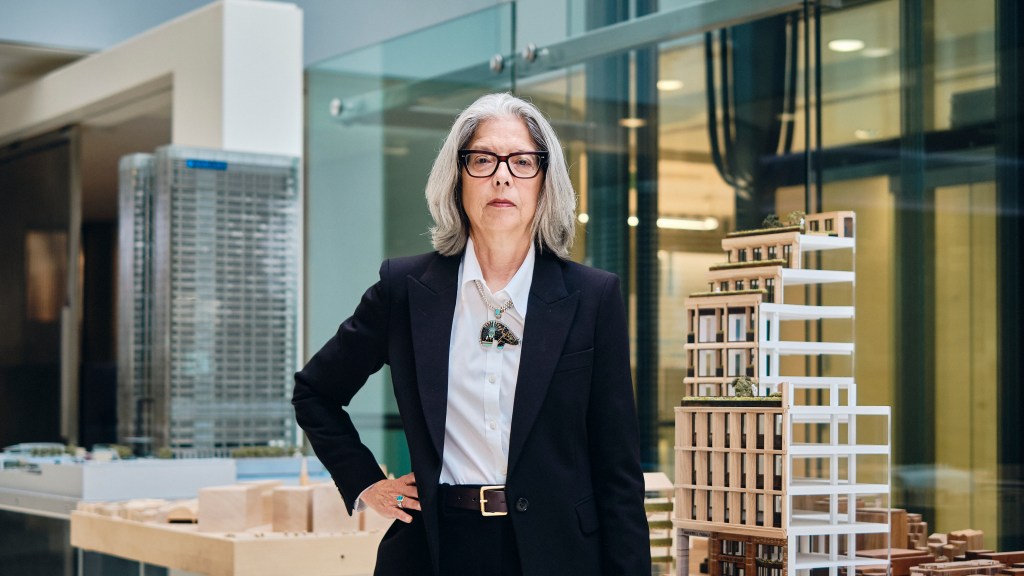Exploring the Impact of Leadership in Architecture: Susan Klumpp Williams’ Journey
As her inaugural project, overseeing the construction of the 220,000 sq ft US embassy in Moscow marked a significant challenge for Susan Klumpp Williams, then a 33-year-old project manager at HOK, a prominent American architectural firm.
The new embassy replaced a previous building, which had to be demolished in 1989 due to the discovery of extensive electronic surveillance devices embedded within its walls and ceilings. Klumpp Williams recalled, “It was very complicated because it had very stringent measures. We had to work in very specialized spaces in my office and then I had to learn all the security protocols on top of [learning] all the basics of how you run a project.” Now 68, she has made remarkable strides throughout her career.
Her dedication and expertise did not go unnoticed. Climbing the ranks at HOK over the years, while leading other major projects such as the FBI Laboratory headquarters in Virginia, she now serves as co-chief executive alongside Eli Hoisington.
Their leadership was officially announced last April, following the passing of Bill Hellmuth, their long-serving predecessor, who died at the age of 69. Klumpp Williams, who had been managing principal of the Washington DC office, had collaborated closely with Hellmuth for three decades and continues to feel the weight of his absence. “We knew each other very well,” she shared. “He was the designer in the Washington office [and] we were a team. The whole thing is incredibly sad. Bill was very vibrant and a whirlwind of energy who loved working in design and loved working with our clients.”
It was Hellmuth’s vision to unite Klumpp Williams and Hoisington in leading HOK. “When he got ill, he came to me and he said, ‘I have this idea. I think it might be a good one.’ That was to team Eli, because he’s a designer, with me on the management side. Mine and Eli’s goal was to then make everything seamless. We want everybody to realize, ‘You’re in good hands because the leadership group that has been leading you is still in place and we are just fine.’”
She believes that having a co-leader can mitigate burnout. “If you read statistics on how long CEOs last, it’s about five years. The co-CEO role allows us to split the workload and Eli still gets to do what he likes to do, which is design buildings and work with his practice. I still get to do what I like, which is to manage my region. And we split travel, which helps with work-life balance.”
Female leadership in architecture remains scarce. A 2022 study by the trade magazine Dezeen highlighted that only three out of the hundred largest architecture firms globally are led by women, with only two featuring management teams with more than 50 percent female representation. “It’s great to be a role model for all the women in the company,” remarked Klumpp Williams, reflecting on her own experience rising through the ranks without any female role models.
“It was very male dominated. There were women architects, but the challenge back then was that women had children and then they never returned. If female designers didn’t achieve the career progression they sought, they often left the field entirely, either to start their own firms or transition to different industries altogether.”
Klumpp Williams, a mother of two aged 20 and 22, often receives inquiries from junior women in her firm regarding balancing career and family life. “You need a supportive spouse, which I was fortunate to have, and one of my strengths is my organizational skills and effective time management. I am very careful with how I schedule my days,” she explained. “You won’t find me chatting in the kitchen over a cup of tea for an hour: I don’t have time for that or I’ll end up working late. I prefer to get things done swiftly.”
During a recent trip to London, Klumpp Williams visited the Crick Institute, Europe’s largest biomedical and research center, designed by HOK and inaugurated in 2016. She noted that scientific and technological spaces are becoming increasingly significant within the firm’s UK projects. For organizations in this sector, having a well-designed facility is crucial for accelerating innovative breakthroughs, such as vaccines, which address pressing global challenges. “They’re producing solutions to help the world’s challenges,” she stated, also mentioning pride in recent projects including the Advanced Research Cluster at Glasgow University.
However, the commercial buildings sector continues to be affected by the pandemic, a trend that is evident across HOK’s global offices, especially in America. “The post-pandemic effect has resulted in many not wanting to return to the office and high vacancy rates persist, so that industry may take time to rebound. I suspect it won’t be next year,” she remarked, adding that HOK’s diverse market sectors and geographical presence provide resilience during downturns.
One area showing growth is the renovation of music and sports venues: HOK recently oversaw a £50 million renovation of the AO Arena in Manchester, expanding its capacity to 23,000. Klumpp Williams expressed enthusiasm for stadium projects, particularly fond of the Nationals Park baseball stadium in Washington DC, which opened in 2008.
This specific project is etched in her memory for its high sustainability standards, despite such considerations not being part of the initial plans or budget. After collaborating closely with builders, planners, and financiers, the stadium achieved LEED Silver certification, marking it as America’s first professional sports venue to earn such recognition.
Klumpp Williams recalls the emotional day of the park’s opening: “On opening day with 40,000 screaming fans it was like, ‘Oh boy. Finally, baseball is back in Washington DC and all these people are so happy.’”




Post Comment